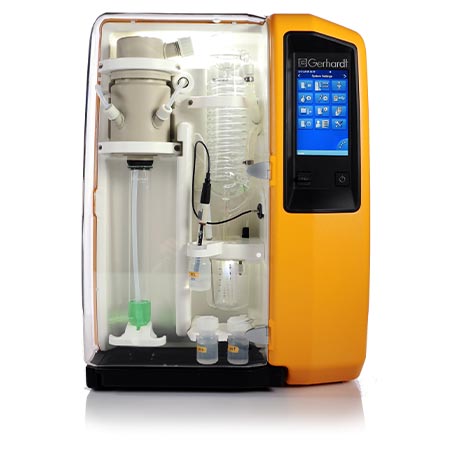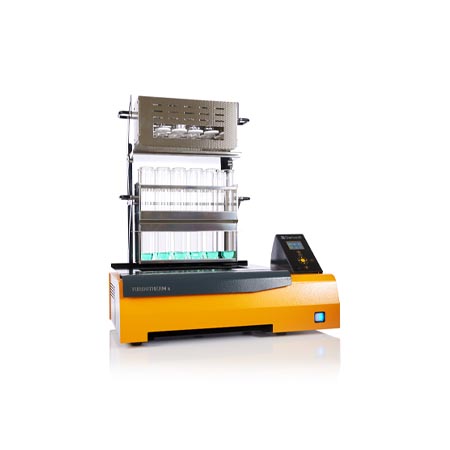Nitrogen is an essential chemical element and can be found in various compounds in many natural sources and processed products. The determination of the nitrogen content is therefore a significant aspect in many industries and laboratories. In food analysis, for example, the nitrogen content in food is determined in order to subsequently determine the protein content by using the protein factor. For the agricultural industry, the determination of nitrogen in fertilisers is particularly important, as the nitrogen content is an essential part of the nutrient supply for the plants and thus has an impact on quality and price. In the chemical industry, the nitrogen content is of great importance for quality control, as this is a quality indicator for e.g. tyres (rubber) or fuel additives.
In analytics, three different methods are mainly used for nitrogen determination: The Kjeldahl analysis (wet chemical method), the Dumas method (combustion analysis) and NIR (near infrared). While the Kjeldahl method is still the definitive international reference method for nitrogen analysis, the Dumas combustion method is becoming increasingly popular. Alternatively, NIR is also used, but here the analysis must be regularly calibrated by a reference method, e.g. Kjeldahl.





![[Translate to English:] [Translate to English:]](/fileadmin/_processed_/9/5/csm_kachel_800x800p_methode_kjeldahl_blanco_web_dc26ad6566.jpg)
![[Translate to English:] [Translate to English:]](/fileadmin/_processed_/8/7/csm_kachel_800x800p_methode_dumas_blanco_web_ac96dce359.jpg)
![[Translate to English:] [Translate to English:]](/fileadmin/_processed_/3/2/csm_cg_publications_800x800_starch_a16348c882.jpg)


